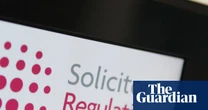Many leaders have spent their careers under a work model focused on jobs centered on a command-and-control hierarchy. Reorienting to a more agile, skills-powered model will be a major paradigm shift for them. Furthermore, the future of work requires not only a change of mindset for leaders but also a shift in skill set. What it took to be a successful executive or manager using the old way of work will simply not translate. New skills, social values, and behaviors will be required. In a system of continually reinvented work, there are fewer places for leaders to hide and thus more visibility. The success of leadership will be less defined by title than by projects and accomplishments and, ultimately, character. As we have shown, leaders will need to rethink fundamentals like attracting, retaining, motivating, and engaging workers and will need to attend to their individual leadership brand.
Leaders will want to take this opportunity to reorient around more humanistic leadership. This is because talent will be looking closely at both the task’s desirability and the leader’s “brand” and reputation. Leaders will continually earn their reputations through their track records and behavior.
The most successful leaders—who can best attract talent—will be those who can steadily and sustainably guide the ship and match skills to work. What must leaders adapt to lead a skills-powered organization? As John Boudreau and Ravin Jesuthasan noted in Work without Jobs, five fundamental skill shifts must be undertaken.
1. Moving from hierarchical authority to empowerment and alignment: One of the most observable changes in a skills-powered organization is a shift in how work is done. Leaders will need to transition from thinking about how they organize jobs to thinking about how tasks and projects are accomplished. As employees gain the flexibility to shift from project to project based on skills and preferences, leaders must set strong frameworks to balance that empowerment with accountability and create an organization-wide consistency that keeps people aligned with the broader mission. Organization-level leaders will need to focus on how they:
• set the overall strategic mission for the organization;
• define and prioritize tasks and projects;
• define the standards, goals, conditions, supporting systems, resources, and skills needed to accomplish those tasks; and
• support leaders and managers throughout the organization.
Once these top-level goals and processes are set, functional leaders will establish guardrails and systems to align and support midlevel leaders, focusing on how work is accomplished and shared. Midlevel leaders will then use those guardrails to prioritize and translate organizational goals into strategic objectives and skills required for their units. Frontline managers will continue to define and prioritize the processes, tasks, and skills required to meet team and organizational objectives. At the project level, leaders will deconstruct projects into tasks and tap workers to join their projects and teams based on the skills needed. Workers will no longer be assigned exclusively to one leader or role but will be free-floating.
This means that leaders and managers throughout the organization will need to transition from being leaders of people in roles to being leaders of people on projects, organizing and optimizing people and technology around skills and orchestrating resources to accomplish tasks and meet goals.
2. Moving from technical to humanistic work automation: As AI, machine learning, and technologies like ChatGPT-4 and Dall-E 2 continue to transform our work, leaders must balance how humans and automation work together across projects and tasks. This is an advantage skills-powered work has over job-centered work, as optimal solutions for work automation are often visible only at the task and skill level. Looking through this lens will help leaders make better choices regarding how they replace, augment, or reinvent human workers. To successfully make this transition, leaders must come to a more nuanced understanding of what humans bring to the table regarding aesthetic creativity, cultural context, and innovative potential. They must also eliminate biases that assume machines will always produce greater efficiency or consistency.
3. Moving from episodic to continuous focus on diversity, equity, and inclusion (DEI): A large part of the transformation to a skills-powered organization means reorienting around more human social values. Traditional models encourage an episodic view of DEI, but the future of
work will be determined by the quality of DEI in ongoing relationship and interactions. In skills-powered organizations, leaders are actively involved in choosing, assigning, and developing team members, and the focus will be squarely on the substance of those interactions. Each interaction will present an opportunity to enhance DEI or perpetuate existing bias if it persists.
4. Moving from digital savvy to tech fluency: Recent and rapid innovations in areas such as AI and robotics have challenged companies to keep up with rapid process and workflow changes, but combining humans and automation in the ecosystem of work means balancing innovations with viability, practicality, and decisions on the project or task level. This is a symbiotic relationship. Where teams are simultaneously forming and disbanding, algorithms will be at the heart of supervision and coordination, giving leaders the tools and insights they need to stay informed and to determine where or whether automation will replace, augment, or reinvent human work and the skill implications of those choices.
5. Moving from process execution to project guidance: This involves sourcing talent beyond the traditional organization and rapidly assembling teams based on skills using tools that agile teams now use (scrum, sprints, hacks, etc.). Guardrails (HR, IT, legal, compliance, operations finance, etc.) are now set when someone takes a job—clearances, processes, and so on. But as jobs give way to skills as the currency of work, the guardrails will have to be adapted quickly and continually, with cross-functional coordination.
At first, a skills-powered organization may seem to diminish the human dimension of work, but the steps above illustrate how central humanity will be to such an enterprise. To avoid chaos and ensure alignment with a broader strategy, leaders must shift how power and accountability are distributed and evolve to a more agile, serial leadership model that emphasizes their human skills.
This extract is from The Skills-Powered Organization: The Journey to the Next-Generation Enterprise by Ravin Jesuthasan and Tanuj Kapilashrami, which is published on October 1, 2024 by the MIT Press. Reproduced with permission from the publisher.









No comments